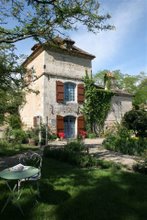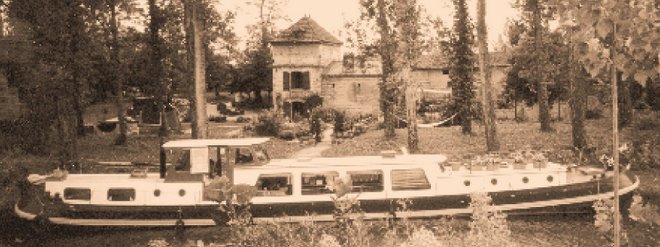
Lalbenque Tuesday Feb 20 2007 2:20
The town fills fast with cars with license plates that end in 24, 01, 31, 33, 47—the numbers of the French departments. We head straight to the Café Le Lion d’Or to score a table—oops, already too late. ‘No reservation? Sorry.’ Impossible, I think, as I spy a space at the bar. “Ok. Merci. Come on, Pim, let’s have a drink.” But before we have gotten our glass of Vin de Noix and a heaping plate of pistachios, the manager returns, shrugs over his shoulders and gestures to an empty table behind us. I think it was the big camera* that Pim slung onto the bar.
+email.jpg)
+email.jpg)
Cou de Canard salad with endive and truffles
(where are you
Lucy girl? )
A perfect omelette aux truffes just running out the edges
A little patty of a goat’s cheese from Rocamadour
That Chocolate Walnut Tart in a pond of crème anglaise
Café? no time. the crowds are moving.
The café begins to empty. The street is filling. Little Red-Ridinghood baskets are appearing. The energy increases as does the sound level floating in from the opening doors. Without waiting for the waiter, I head back to the bar to pay. No truffle is going to escape my nose. I quickly lose Pim in the crowd—a sea of black berets, flat caps and winter coats swallows her and her big camera.
The players take their places behind the knee high bench tables. A blue cord is strung down the street to keep the spectators back until the Marché aux Truffes de Lalbenque officially opens at 2:30 pm. Dealers, chefs, négociants and tourists mingle elbowing in for a better look, sniff, haggle. This is as close to dealing on the street that I’ll probably ever get. 400€uros per kilo for the middle quality, less for brumales—the herby smelling less valued tubers, then up to 850€ per kilo for premium top grade Tuber Melanosporum.
email.jpg)
+email.jpg)
One of our lunch neighbors turned out to be
Bernard Planche, a walnut merchant who also makes a truffle-scented shampoo and massage oil. Everyone here seems slightly truffle mad. Sticking as close as a Pig to her truffle, I followed Bernard down the line as he chatted with his favorite merchants, the one who catches grives and becasse for him, the one who brings 20 kilos of brumales suitable for making Moutarde aux Truffes and other pungent aphrodisiac products.
+email.jpg)
The baskets are small, modest, lined with an old hankerchief, a calender tea towel, a chiffon of a red-checked tablecloth. With B.P.’s help, I buy a small basket full of dizzyingly ripe truffles- two walnut sized of good quality, two large brumales and a small moldering little nugget not worthy to train a pig, let alone Bacon. 50 Euros. After returning home, we agree the comparison of the real truffle and the brumales is a lesson well learned. For more truffle baskets treasures check out
ChezPim.
email.jpg)
The car smells like truffle, the kitchen smells like truffle, I smell like truffle. We eat a simple omelette for lunch and make Marthe Delon’s Lapin aux Truffes for dinner. It's enough.
+email.jpg)
*The big camera rocks.




+email.jpg)
+email.jpg)
email.jpg)
+email.jpg)
+email.jpg)
email.jpg)
+email.jpg)























